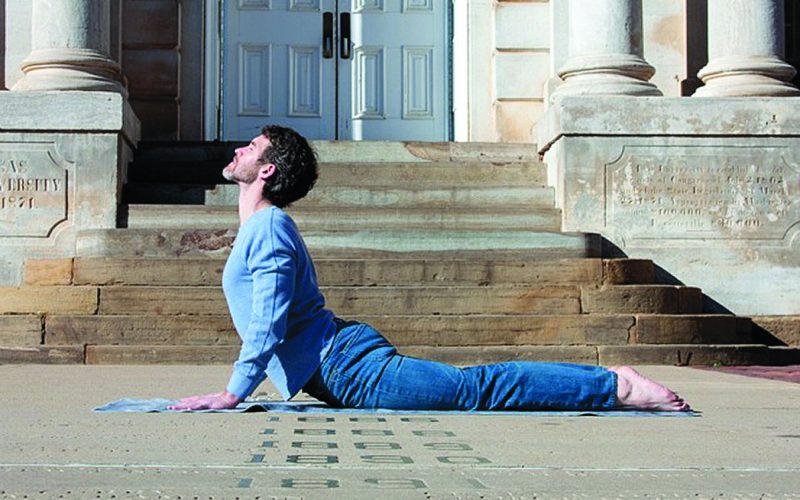Bhujangasana — Cobra Pose
(boo-jang-GAHS-anna)
Sunday’s new moon marked the Chinese New Year, and the upcoming 13 lunar cycles fall under the auspices of the Water Snake. Although often demonized in the West, the serpent is a wise and powerful totem that symbolizes transformation, new life and the awareness of the cyclical nature of reality. To commemorate the new year, offered below is an explanation of Bhujangasana — cobra pose. A very powerful, heart opening asana, Bhujangasana should be approached playfully yet carefully, with a mindful sense of inner-transformation.
1. Lie prone (on your belly) on a mat or a folded blanket, resting the tops of the feet on the floor. Experiment with the spacing of the feet, not exceeding hip-width. Bring both hands under their respective shoulders spreading the fingers nice and wide in an effort to create as much surface as comfortably possible. Work towards bringing the index fingers parallel with one another. This will help keep the elbows hugging the sides of the body and an even engagement of the chest muscles (pectoralis major and minor).
2. Press the tops of the feet, thighs and pubis into the floor as you lengthen from the tailbone to the crown of the head. Allow the chest to begin to lift off the floor.
3. Hug the elbows in towards the spine and with an inhale begin pressing the palms evenly into the mat, slowly straightening the arms while continuing to lengthen through the entire body as you peal the torso from the mat. Pay close attention to the lower back, only coming up as far as is comfortable. It is not necessary to fully straighten the arms in order to benefit from the pose.
4. Upon finding the space in which you feel comfortably engaged, remove any shrug of the shoulders by rolling the shoulders away from the ears, down and back towards the waist. Allow the shoulder blades to remain active and firm, assisting in the lifting of the heart center and promoting further extension of the spine.
5. Locate a drishti (focal point) that allows your head to tilt to about a 45 degree angle (or to your level of comfort). Remain in the pose as long as the mind is engaged, the body is comfortable and the breath is even and not labored.
6. To release from the pose, maintain the length in the spine as you reverse the process, releasing first the pubis to the mat, followed by the abdominals, solar plexus and heart center. Following bhujangasana, consider sending the hips back to the heels and taking balasana — child’s pose — to release the lower back.
There’s often a tendency to lean on the outside of the palms in cobra pose. This is often due to leaning on the hands instead of actively pressing the hands into the floor. To avoid this, and to keep the wrists safe and the forearms engaged, press the circumference of the palms into the floor while drawing the center of the palms up and away from the mat. Allow the fingers to rest lightly on the floor.
The physical benefits of cobra pose are many — it strengthens the spine, shoulders, chest and abdominals, firms the buttocks, opens the heart and lungs, in turn promoting efficient circulation, to name a few. The subtle body benefits include the activation of the anahata chakra, deepening our capacity to experience and express both compassion and love.
As with any asana, listen to the wisdom of your own body when performing bhujangasana. Yoga is neither a race nor a competition. It is an applied scientific process of self-discovery and conscious evolution with the ultimate aim of self-actualization. Go ahead, shed that old skin. Let that inner spark of divine light shine.
Namaste.
Alexander Wayne teaches yoga and meditation at the U of A and Fiddlehead Fern Therapeutics. Check out 8 Days a Week for class schedule.




